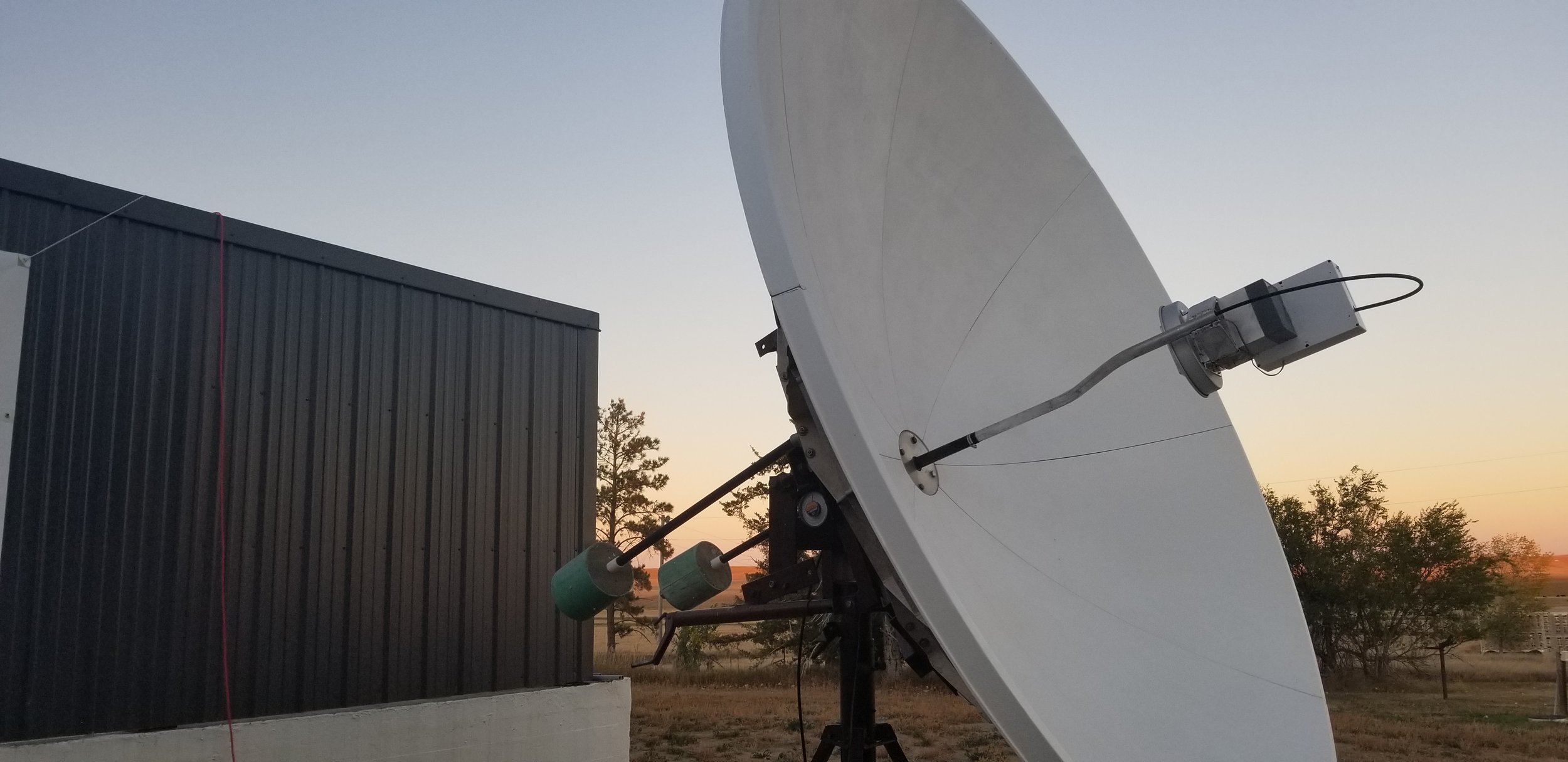Did someone say “Wow!”???
We have been making occasional progress reports about our Radio Telescope.
We are pleased to announce that we achieved “first light” on October 4, 2022. We are now receiving neutral hydrogen emissions from the Milky Way Galaxy using our 10 foot Radio Telescope Dish in drift-scan mode!
The inevitable question is “WHY”?
We are expanding our spectrum at Badlands Observatory
1. Radio Astronomy is an exciting complement to the observations we make with our visual telescopes.
As you may know, the visible portion is but a tiny sliver of the total electromagnetic spectrum. With our eyes we are unable to detect signals occurring in gamma rays, x-rays, ultra-violet, infrared, and radio waves. Only when those signals are translated to the visual and audio spectrum can we “see” and “hear” them.
We are listening with our “Golden Ear”. A golden ear in audio circles refers to a person with extraordinary listening talent. Our Golden Ear was originally a 10’ satellite dish acquired from the surplus stock of Golden West Telecommunications. It was transported from Custer, repaired, set on a concrete slab, restored to being adjustable in altitude and azimuth, modified with new feedhorn electronics in order to operate at 1.42 GHz and equipped with the latest in software defined radio technology. It has been a long process and the refinements in signal analysis continue.
Over the next year we hope to develop a map of the radio emissions from the Milky Way as observed from our location.
2. Introduce the public to Radio Astronomy.
With our drift scan observations and audio-visual outputs, we can demonstrate to the public what Radio Astronomy achieves and what Radio Telescopes do to increase our knowledge of the Universe and the electromagnetic spectrum.
In the graphical image and video shown below, you can see and hear the hydrogen emission as a red waterfall below the bump in the signal shown above it as the Milky Way drifts across the plane of the Golden Ear. The red line above corresponds to where the Wow! signal was heard.
Our Golden Ear joins our Itty Bitty Radio Telescope which demonstrates the radio emissions from the Sun.
3. “ Listen” to the Cosmos for unidentified transmissions.
In 1977 the famous Wow! signal was detected by Ohio State University’s “Big Ear” radio telescope. The signal, which lasted for 72 seconds, has never been heard again and the source has never been identified. Was it from extraterrestrials? On August 15, 2012, the 35th anniversary of the original signal, Arecibo Observatory beamed a series of messages and video vignettes towards the stars Hipparcos 34511, 33277, and 43587 to promote National Geographic’s series “Chasing UFO’s”.
Badlands Observatory is hoping to participate in SETI’s survey program by continuing to monitor the same location and frequency where the Wow! signal was heard. The Wow! signal was detected at nearly the same frequency as the neutral hydrogen emission from the Milky Way Galaxy at 1.42 GHz. This region of the spectrum is often referred to as the “Watering Hole” for SETI purposes.
Radio Telescope at Badlands Observatory with new feedhorn assembly
Electromagnetic Spectrum Chart
Graphical display of computer feed from Radio Telescope
Video of computer feed from Radio Telescope. Radio feed on right; Milky Way area being observed on left.



